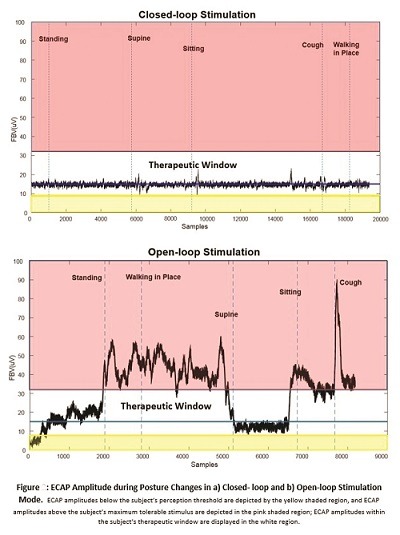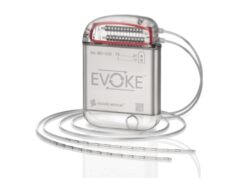With six-month follow-up indicating that dorsal column activation is regulated to therapeutic levels by closed-loop spinal cord stimulation (SCS) using evoked compound action potentials (ECAPs), this stimulation paradigm may help mitigate tolerance.
That is the conclusion of a study presented at the International Neuromodulation Society World Congress (INS; 27 May–1 June, Edinburgh, UK) by Marc Russo (Hunter Pain Clinic, Newcastle, Australia) and published in the congress abstract book.
According to Russo et al, tolerance has been described as a progressive loss of pain control in a functioning spinal cord stimulator system, and reported as the most important factor in long-term failure. ECAPs are a measure of dorsal column activation in response to stimulus. As electrical doses are increased, dorsal column activation increases (ECAP amplitude), and patients report increasing pain coverage.
“A therapeutic window is evident with defined sub-therapeutic, therapeutic, and painful levels of stimulation. The electrical dose delivered by conventional ‘fixed-input’ SCS systems is highly variable and often outside the therapeutic window due to movement and physiological changes. Hypersensitisation of Aβ nociceptors from stimulation outside the therapeutic window may contribute to tolerance. A closed-loop SCS system using ECAPs has been developed to maintain stimulation at therapeutic Aβ fibre activation levels and limit the activation of Aβ nociceptors,” the abstract explains.
A single arm, prospective, multicentre study is currently being conducted to evaluate this closed-loop SCS system (Evoke from Saluda Medical) to treat chronic back and/or leg pain. In the study, the in-clinic posture change assessments, whereby patients perform posture changes and rate (0–10) the intensity of the stimulation during each posture, were performed. This assessment was analysed in both closed-loop and open-loop stimulation modes for one patient. In addition, overall pain reduction and explant rates were assessed.
The abstract reports that to date, 36 patients have been implanted.
“No patients have been explanted due to loss of therapeutic effect. Mean overall pain reduction was 76% (n=35), 79% (n=31), and 74% (n=21) at the one, three, and six-month visits, respectively. Mean reported 234 stimulation intensity change in any posture at all follow-up visits was ≤0.6,” the abstract states.

Figure 1 displays one patient’s ECAP amplitude during the posture change assessment in closed-loop and open-loop stimulation modes. This patient reported no uncomfortable stimulation intensity changes in closed-loop mode, whereas the changes in stimulation intensity from sitting to standing, walking, lying to sitting and coughing were uncomfortable in open-loop mode.
According to Russo and colleagues, these data demonstrate negligible changes in perceived stimulation intensity during posture changes with a closed-loop SCS system. Additionally, patients continue to have profound pain reduction, which has remained stable through six months; no patients have had their devices explanted due to loss of therapeutic effect.
The abstract concludes that while interim results demonstrate that dorsal column activation is regulated to therapeutic levels by closed-loop SCS using ECAPs, longer term follow-up is required to determine if this stimulation paradigm may help mitigate tolerance.












